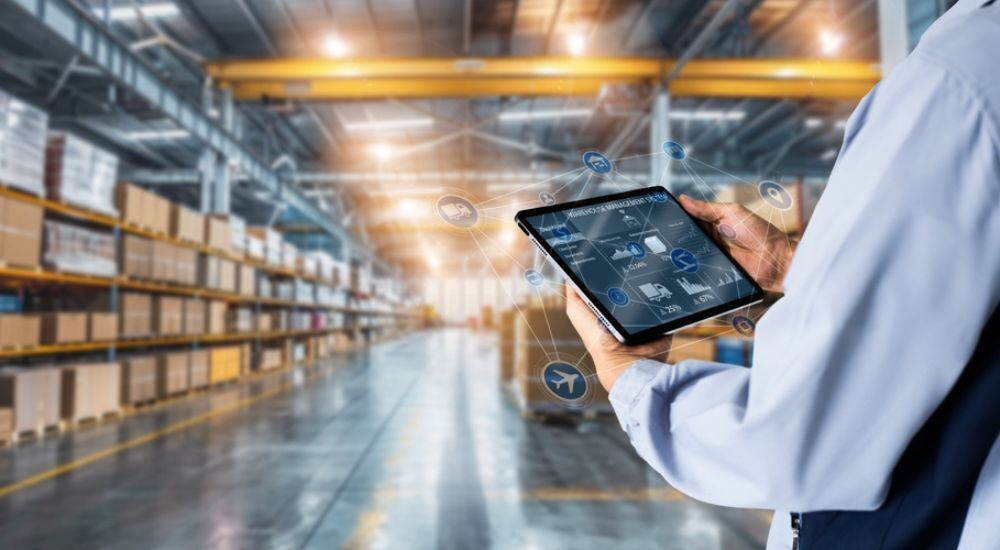Sustainable nearshoring: is it a reality in Mexico?
23/07/2025Sustainable nearshoring in Mexico is viable through a comprehensive strategy that combines operational efficiency, technological adoption, compliance with international standards, and responsible natural resource management.
The relocation of operations to Mexico is not only triggering significant investment in the country but also driving more conscious developments and transforming the traditional concept of industrial spaces.
This convergence of factors enables operations to be not only profitable and efficient but also environmentally responsible, aligned with global sustainability commitments, and ready for the future of industry.
Sustainable development in Mexico's real estate industry
The growing demand for responsible developments is driving the expansion of the industrial real estate market, with an annual growth projection of 15% and an estimated value of MXN $652 billion by the end of 2025, according to data from Investo.
However, this growth also places significant pressure on natural resources, particularly water, as reflected in the data:
- Critical water scarcity: By the end of 2024, nearly 50% of Mexico’s territory was experiencing drought conditions. CONAGUA
- Industries such as manufacturing and agriculture heavily depend on water availability.
- According to AMPIP, the manufacturing industry requires 0.5 liters per second per hectare in industrial parks.
- Many industrial parks are already reusing up to 80% of their water consumption through on-site treatment plants.
In this context, integrating sustainability as a structural component of industrial development is not just desirable, it is essential to ensure the long-term viability of nearshoring in Mexico.
Key factors connecting nearshoring and sustainability
A survey conducted by AMPIP and the World Bank Group among 30 developers, representing 215 industrial parks in Mexico, revealed that only 30% have adopted sustainability practices, such as participating in the Socially Responsible Company distinction or obtaining certifications like LEED, BOMA, EDGE, and NOM-008.
However, significant gaps were identified: compliance with international standards remains low across various areas—economic (26%), management (11%), environmental (33%), and social (30%).
This reflects initial progress but also highlights the urgent need to elevate practices to global standards.
Adopting best practices can benefit companies, as buildings with LEED (Leadership in Energy and Environmental Design) and other sustainability certifications may be eligible for tax and financial incentives, according to El Economista.
Explore innovative and available industrial parks in Mexico’s main industrial regions, offering LEED certification, strategic logistics connectivity, and competitive advantages for your investment.
Sustainable industrial parks as green transformation hubs
Industrial parks are evolving to become key components of nearshoring to Mexico, within a sustainable development framework.
Increasing demands from investors, corporate clients, and financial institutions are driving a profound transformation: tangible proof of environmental responsibility is now essential, and certified industrial developments are emerging as a direct response to this market shift.
Trends in the development of sustainable industrial parks:
- LEED certification and environmental management systems integrated into space design and operations.
- Infrastructure ready for solar energy and wastewater treatment, reducing operational environmental impact.
- Efficient use of construction materials, prioritizing durable, recyclable, and low-impact solutions.
- Design of multifunctional spaces that enhance employee well-being, safety, and productivity.
- Compliance with ESG criteria, which are increasingly required in investment and financing processes.
- Promotion of clean energy use and technologies that optimize water consumption.
Technology as an enabler of smart industrial developments
The adoption of PropTech technologies, such as IoT for monitoring and control, enables data-driven decision-making regarding consumption and efficiency. In this context, CBRE highlights energy and water audits as key tools to reduce operational costs and improve water efficiency.
Technologies transforming sustainable industrial development:
- Artificial intelligence and Big Data: Enable strategic decision-making based on real-time data and allow for accurate market trend forecasting.
- Virtual and Augmented Reality: Facilitate remote site visits and streamline decision-making in sales and leasing processes.
- Blockchain: Enhances legal security through smart contracts, accelerating and safeguarding transactions.
These solutions not only improve operational and commercial efficiency, but also enable the creation of more sustainable, connected, and resilient industrial developments, aligned with the current demands of the global market.
Looking for a strategic location for your industrial operation?
Frontier Industrial offers industrial parks in Mexico at the most dynamic regions—from the Bajío to the northern border. We have land for sale and ready-to-occupy industrial buildings for lease, all located within the country’s main logistics corridors.
Our spaces are equipped with comprehensive infrastructure and services, including:
- On-site utilities: electricity, water, roads, and telecommunications.
- LEED certifications in select developments.
- Security and controlled access for personnel and materials.
- Custom Build-to-Suit development options.
These features position Frontier’s industrial parks as a robust and flexible solution for companies seeking efficiency, customization, and sustainability in their operations across Mexico.
Contact us to explore our range of options in strategic locations nationwide.
You may also be interested in learn how automation and IoT are revolutionizing industrial parks in Mexico







